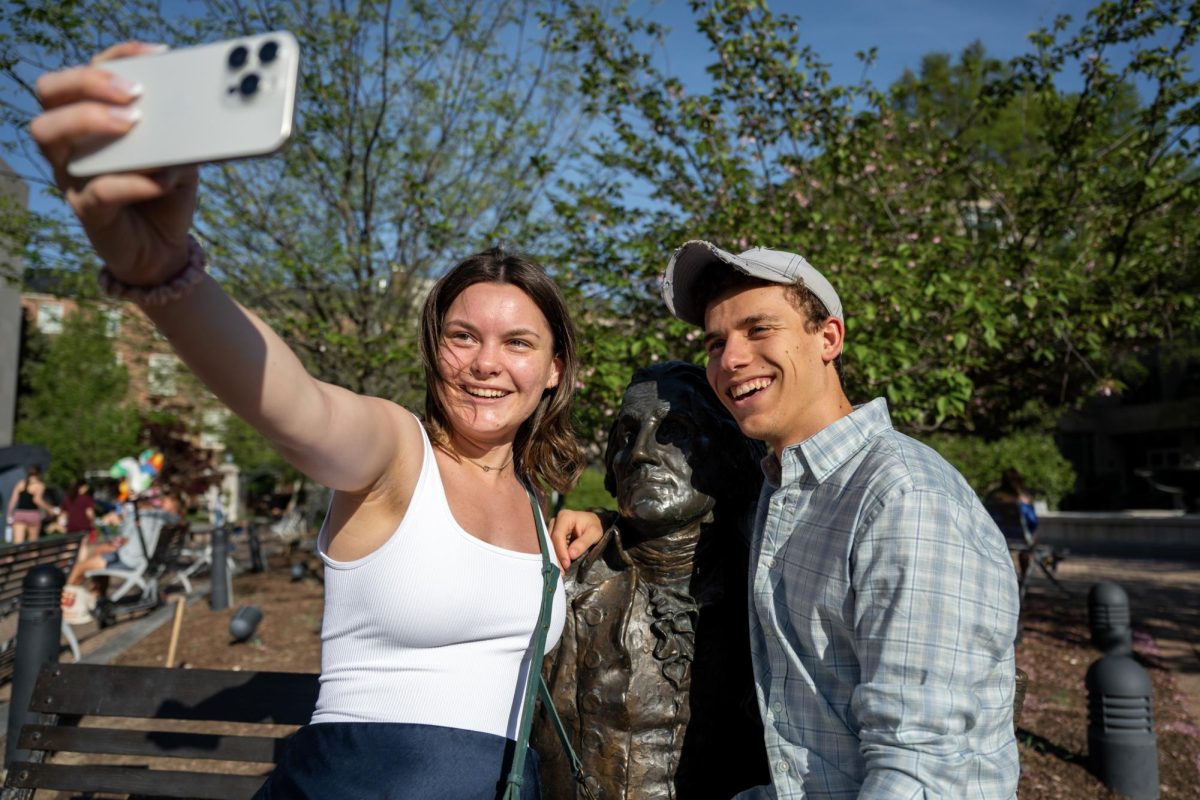The sounds of helicopters and soldiers’ wails resonate through the stark gallery rooms.
As visitors near the Corcoran Gallery of Art’s “Sleeping Soldiers” exhibit, the sounds call them to attention. Before discovering what is causing the unsettling noise, visitors walk past a collection of Civil War photographs as they enter another world of completely different combat.
The jarring exhibit features the work of photojournalist Tim Hetherington, who captured the lives of U.S. Army troops during their 15-month deployment in the Korengal Valley in Northeastern Afghanistan, the epicenter of the U.S. fight against the Taliban.

Hetherington, who died last April in Libya, followed the soldiers of the 173rd Airborne Brigade Combat Team at Outpost Restrepo and immersed himself in their day-to-day, even minute-by-minute lives. The nine photographs on display at the Corcoran depict the intimacy of Hetherington’s role as an observer of these soldiers.
“We are used to seeing soldiers as cardboard cutouts. We dehumanize them, but war is a very intimate act. All of those soldiers would die for each other. We’re not talking about friendship. We’re talking about brotherhood,” Hetherington said, reprinted in a press release from the Corcoran Gallery of Art.
Hetherington was an award-winning British photographer, writer and filmmaker. He began capturing conflict in the 1990s in Sudan and Liberia. His documentary work “Restrepo,” filmed with co-director Sebastian Junger, won the 2010 Sundance Film Festival’s Grand Jury Prize for best documentary and received a nomination for a 2011 Academy Award.

In an interview for Public Radio International about “Restrepo,” Sergeant Brendan O’Byrne of the platoon that Hetherington stayed with said, “They could have made a lot more money than they did, because they wanted to tell the truth. The truth was more important than anything else. And to me, and to everyone in the platoon, that was huge. We didn’t care if we looked bad, we just wanted the truth to be told. Some people change the world and Tim did. There’s going to be huge shoes to fill. Huge.”
Hetherington’s legacy lives on in the exhibit. Rather than focus on clichéd images of soldiers on the battlefield, similar to the depiction on display in the Civil War exhibit preceeding “Sleeping Soldiers,” Hetherington captured a different portrait of the men.
The soldiers are shown relaxing or waiting around in most of the pieces. A photograph from Afghanistan, “Korengal Valley, Kunar Province, April 2008” shows soldier Sterling Jones relaxing with a game of golf with a hilly Afghani landscape in the background. “Korengal Valley, Kunar Province, 2007” features soldier Tad Donoho wailing from the playfully-induced pain of having his stomach slapped pink by his peers as a birthday “treat.”
The main focus of the exhibit is the three-panel projection of the video, the exhibit’s namesake. This triptych juxtaposes still images of the soldiers looking peaceful and childlike mid-slumber with intense video clips of helicopter-filled skies and explosions. The effect is an audio-visual experience that places the audience in the minds of the soldiers.
Both the “Sleeping Soldiers” exhibit and “Shadows of History: Photographs of the Civil War from the Collection of Julia J. Norrell” are on display at the Corcoran Gallery of Art through May 20. Student tickets are $8 with valid identification.






